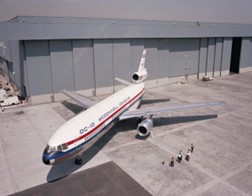On Engineering Ethics
Published:
My responsibility as a professional engineer begins with my obligation to ensure the safety of society by ensuring that I maintain an ethical practice. I must practice my profession only in the areas where I have the requisite knowledge and expertise. Herbert Hoover puts this into context saying [4]:
“His acts, step by step, are in hard substance. He cannot bury his mistakes in the graves like the doctors. He cannot argue them into thin air or blame the judge like the lawyers. He cannot, like the architects, cover his failures with trees and vines. He cannot, like the politicians, screen his shortcomings by blaming his opponents and hope that the people will forget. The engineer simply cannot deny that he did it. If his works do not work, he is damned…”
There has been a significant cultural and technological shift in the past century that has increased the number of companies, products and consumers which has amplified the need for engineers in the work force. Engineers move between companies several times in their careers, which makes upholding their ethical responsibilities even more challenging. In order to achieve the necessary level of competency in a new industry a great deal of learning must be done in order to make sound engineering decisions. Professional organizations like ASME offer a code of ethics that covers some but not all of the attributes needed to navigate the full domain of engineering ethics [1]. A case study of the McDonnell-Douglas DC-10 airplane provides lessons to be learned when working as an engineer [2]. The DC-10 is a three-engine wide body jet airliner that was competing with Lockheed Martin to secure contracts with major airliners. The wide body airliner was because it made flight more affordable for more people and airliners profited on the increased number of passengers per flight.

Figure 1. McDonnell-Douglas DC-10 wide body commercial airliner. [3]
There were a number of incidents involving the DC-10, most notably the 191 DC-10 that crashed only 31 seconds after take-off killing all passengers and crew aboard. This was no fault of the experienced pilots and flight engineers, instead 10 years prior during the design of the plane decisions were made that contributed to the horrible tragedy. The plane was improperly serviced during an engine swap by airline mechanics, causing a fracture in a major component of the engine mount. This was no fault of the engineers as they did not specify the unsafe procedures followed by airline staff in order to shortcut the process. When the engine mount finally failed, it was during take-off and the crew responded accordingly. The issue was that the sensors and controls that could have helped them avoid the crash were taken out of the design at the request of the airline to cut costs. There were no standards or regulations preventing the exclusion of these critical sensors that provide information vital to the pilots in the event of a stall. Engineers could have prevented the removal of this device, and saved lives. McDonnell-Douglas lost the faith of consumers who would no longer fly in their planes. The company’s stocks dropped 20% and they faced lawsuits from the grieving families of those killed in flight 191. The company was eventually dissolved and today it is succeeded under a new name, Boeing.
A well-engineered system is safe, and the designer would have done well if he never heard anything about his component doing anything other that operating as it should. As Herbert Hoover said [4],
“…On the other hand, unlike the doctor his is not a life among the weak. Unlike the soldier, destruction is not his purpose. Unlike the lawyer, quarrels are not his daily bread. To the engineer falls the job of clothing the bare bones of science with life, comfort, and hope. No doubt as years go by the people forget which engineer did it, even if they ever knew. Or some politician puts his name on it. Or they credit it to some promoter who used other people’s money . . . But the engineer himself looks back at the unending stream of goodness which flows from his successes with satisfactions that few professions may know. And the verdict of his fellow professionals is all the accolade he wants.”
I would apply these guiding principles to my own career based on the lessons learned from the McDonnell-Douglas case study.
- Stay curious and be a life-long learner.
- Participate in professional societies in your discipline.
- Maintain a high level of ethical responsibility.
Being curious can lead to many opportunities, it could be a chance to learn something new or a discovery that leads to an improvement. Staying aware and alert of the decisions being made around you can increase your ability to make more informed decisions in the future. The past can teach us many lessons about how to avoid making the same mistakes as others. Joining a professional society is a great way to practice and commit to a set of standards and ethics practiced and believed by other professional engineers. This community will be pivotal in the growth of my career and is the cornerstone for proper practice. All of this though is not enough if I myself am not committed to making honest and calculated decisions in my work. Standing up to third parties and executives is part of the responsibility that I have to society and doing what right for the safety of others is necessary no matter the personal cost.
References
[1] “Ethics in Engineering.” ASME, www.asme.org/about-asme/governance/ethics-in-engineering.
[2] Blyler, John. “Designed for Disaster: The DC-10 Airliner, Part 3.” Design News, 8 Feb. 2017, www.designnews.com/aerospace/designed-disaster-dc-10-airliner-part-3/85178961048911.
[3] Swopes, Bryan. “23 July 1970.” This Day in Aviation, 22 July 2019, www.thisdayinaviation.com/23-july-1970/.
[4] “On Engineering – Herbert Hoover.” The Helpful Engineer, 25 Nov. 2011, thehelpfulengineer.com/index.php/2011/11/on-engineering-herbert-hoover/.
